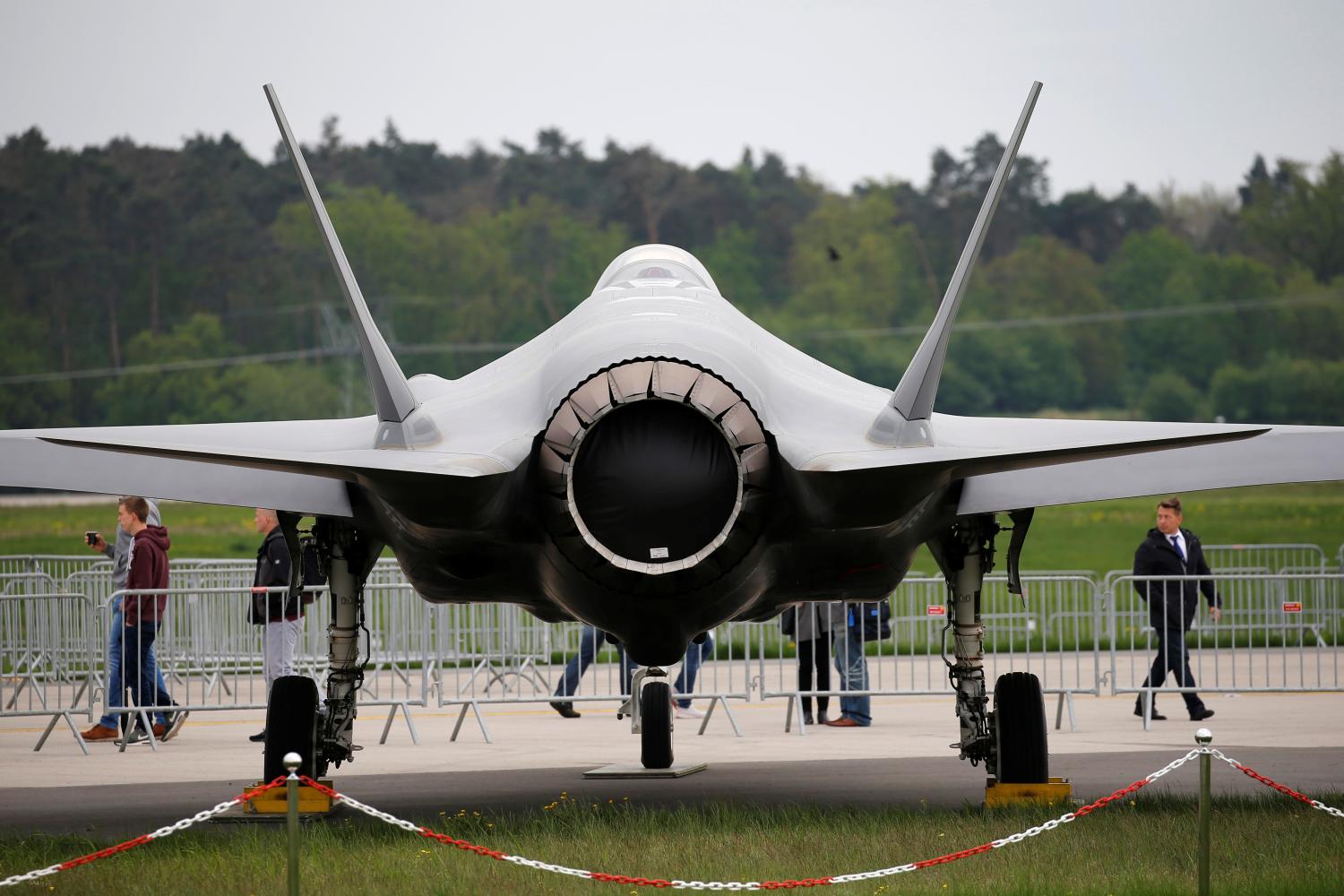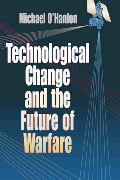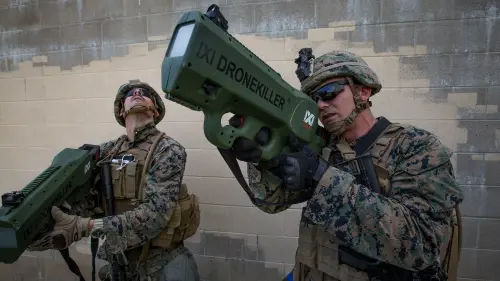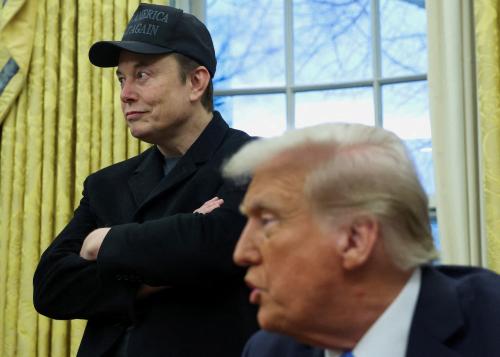Executive summary
This paper revisits the debate that raged in American defense circles in the 1990s over whether a revolution in military affairs was imminent in the early parts of the 21st century. It also seeks to establish a benchmark, and reaffirm as well as refine a methodology, for forecasting future changes in military-related technologies by examining what has transpired in the first two decades of the 21st century. Taking this approach helps improve and validate the methodology that is employed in my forthcoming book, The Senkaku Paradox: Risking Great Power War Over Small Stakes (2019). A subsequent paper seeks to extrapolate a similar analysis out to 2040, gauging the potential for major breakthroughs in military technology and associated operational concepts over the next two decades. Such analysis is of critical importance for evaluating American and allied military and strategic options relevant to great-power war and deterrence in the years ahead.
The paper’s category-by-category examination of military technology mirrors the approach that I employed in a book published in 2000, Technological Change and the Future of Warfare (though it really should have been entitled, The So-Called Revolution in Military Affairs, because I was largely challenging the then-popular notion that a military revolution of historic importance was afoot). Much of the research foundation of that book was the study of a list of 29 different types of technologies in an attempt to gauge which might undergo revolutionary change by 2020. Through a combination of basic concepts of physics, examination of the scientific and engineering literature on various types of technological research, and consultation with experts including at several of the nation’s major weapons laboratories, I argued that in fact only two of the 29 were likely to experience truly revolutionary change. Those two were computer hardware and computer software. I predicted that another eight categories would likely witness high change—chemical sensors, biological sensors, radio communications, laser communications, robotics, radio-frequency weapons, nonlethal weapons, and biological weapons. The remaining 19 categories of key military technologies, many of them sensor technologies or major components of weapons platforms like ground combat vehicles, aircraft, ships, and rockets, seemed likely to advance at only modest or moderate rates.
As noted, to establish a baseline for predicting future change, I first revisit the taxonomy from the 2000 book here, attempting to “grade my own homework” with the 2000-2020 period now nearly over. With that as a baseline, I then attempt in a separate paper to look out from 2020 to 2040, in effect repeating the exercise with a methodology that has been time-tested—and also improved, in response to those areas of technology where my prognostications were less accurate. As with the 2000 book, my assessments employ the same three gradations of anticipated technological innovation—revolutionary, high, and modest/moderate.
In very broad strokes, the findings of this paper are as follows. First, the relatively cautious assessment that I offered in the earlier book of where technological innovation would likely take us from 2000 through 2020 has been generally borne out. There has been a great deal of innovation since 2000, but it would be hard to describe most of it as revolutionary. That was the central argument of the 2000 book, and it would appear to be validated by the ensuing history.
Consider several key categories of military technology. The ages of space, stealth, and precision strike had already arrived by 2000; progress has surely continued since then, yet it has been progress mostly of degree rather than of kind. And tasks that were difficult at the turn of the century, even for very advanced militaries, remain generally very hard today, including missile defense, most dimensions of anti-submarine warfare, and most aspects of infantry combat.
Some things have changed a great deal—the use of remotely piloted aerial vehicles, armed and unarmed, for example. Other types of robotics have improved greatly; relatedly, miniaturized satellites have become much more widespread. But what is generally striking is that these have been in niche areas of military operations (important, yet niche areas just the same), and that they have generally not displaced the other kinds of systems that preceded them. By such standards, innovation has been better viewed as evolutionary rather than revolutionary.
To the extent that my earlier approach was not accurate, it was arguably in two areas: robotics and cybersecurity. The robotics revolution of the last 20 years has been in large part a result of progress in computers and other enabling technologies that were miniaturized and proliferated to a multitude of platforms. The synergies that resulted from miniaturization were more significant than I had appreciated by looking at individual areas of technology one by one. In addition, the incentives felt by the American military in particular were intensified by the post-9/11 experience. From the search for al-Qaida targets, to the discrete use of lethal military force from platforms that were more expendable and less politically visible than other options, to a number of other uses, drones and other robotics moved to the forefront of warfare.
And with extraordinarily improved computers, which I did expect, have come remarkable new vulnerabilities in cyberspace, which I did not adequately anticipate. Indeed, that may be the most consequential development of all between 2000 and 2020.
My partial failures of foresight in these two realms of military technology and operations are instructive for designing any methodology that looks to the future. Importantly, it was most difficult to prognosticate about ways in which multiple technologies might be combined, or about ways in which military organizations might respond to new technological opportunities that required multi-step processes to reach their potential. In terms of robotics, military organizations responded with innovative and entrepreneurial acumen. That is perhaps because the needs for such capabilities were dramatized by the realities of war; lives could be saved, and prospects for success throughout much of the broader Middle East improved, with a serious program of weaponizing unmanned aerial vehicles (UAVs) and otherwise improving the capacities of robotics. Military organizations had major real-world incentives and life-or-death reasons to innovate.
With computers, they did not—indeed, they carelessly allowed themselves to build Achilles’ heels into their own systems, potentially making the performance of future weapons less dependable than past ones had been. In other words, they may even have set themselves back, though it is impossible to know for sure at this point, since we have not seen the kind of interstate warfare among near-peer competitors that would probably be needed to assess the hypothesis accurately. Those operating in the classified world may have a greater sense of the vulnerabilities and opportunities that the United States now faces due to cyber vulnerability, but even they cannot be sure. That is because cyber vulnerabilities are not static, they are always evolving in a game of measures and countermeasures, even faster than in other areas of military operations characterized by such dynamics such as electronic warfare. In addition, the ripple effects of any cyberattack often cannot be easily foreseen even when specific vulnerabilities are understood.
Looking forward, it is therefore possible that the rapid pace of computer innovation, which has led to much greater capacity for miniaturization and for robotics of many types, and also created major vulnerabilities in cyber domains together with looming opportunities in artificial intelligence, may make the next two decades somewhat more revolutionary than the last two. The dynamics in robotics and in cybersecurity discussed here may only intensify and extend into realms such as artificial intelligence. At least, an examination of the last 20 years would seem to suggest the potential for such an acceleration, particularly in light of the fact that multiple countries (most notably China, but also Russia) now have the resources to compete with Western nations in military procurement and innovation. That is the main implication of this paper’s assessments of change in key areas of military technology.
The Brookings Institution is committed to quality, independence, and impact.
We are supported by a diverse array of funders. In line with our values and policies, each Brookings publication represents the sole views of its author(s).





